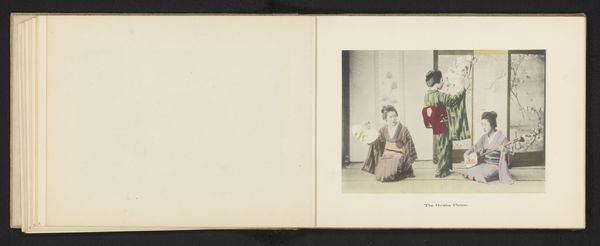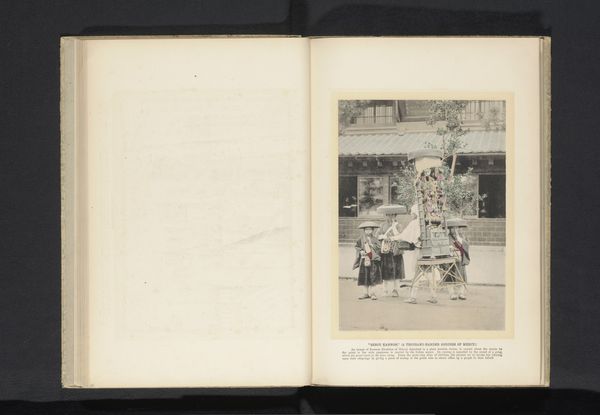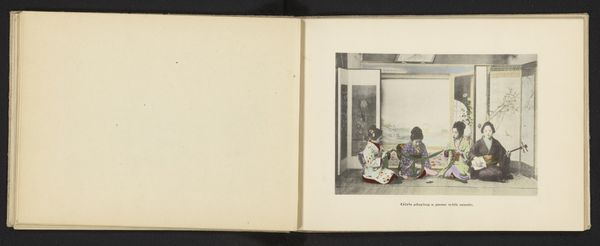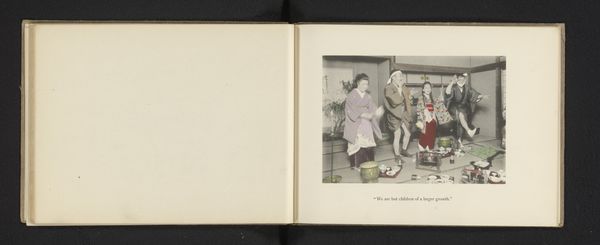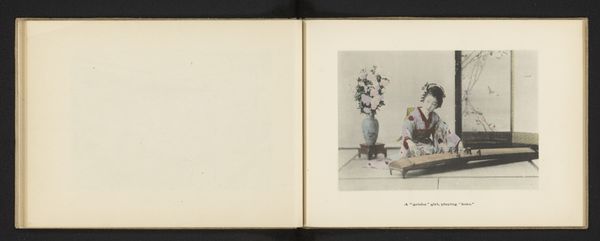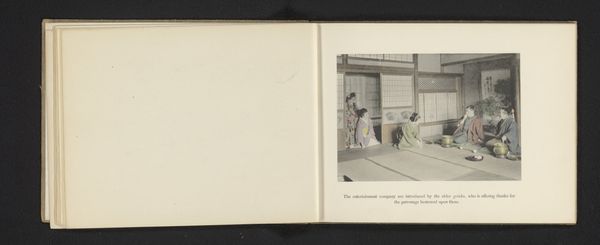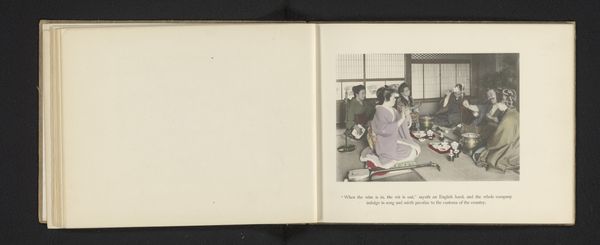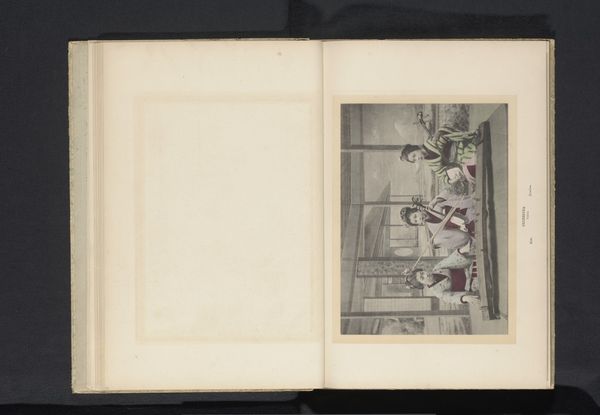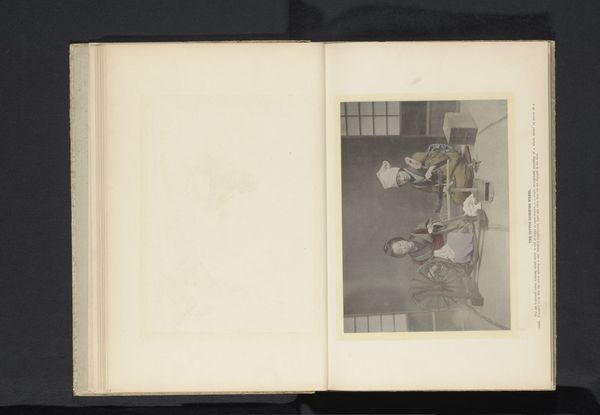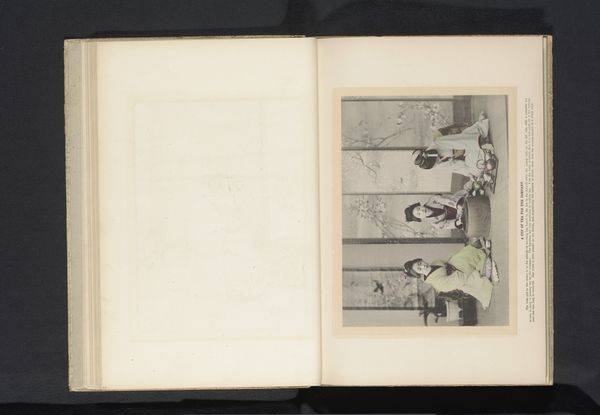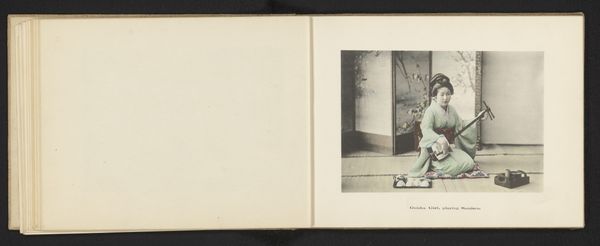
Dimensions: height 106 mm, width 150 mm
Copyright: Rijks Museum: Open Domain
Editor: This photograph, "Vier boeddhistische priesters in Japan" was taken by Kōzaburō Tamamura sometime between 1895 and 1905. The composition is simple, focusing on the four figures, yet there's a formality to the image. How do you interpret this work within its historical context? Curator: Considering the date, we must view this image through the lens of Japan's rapidly modernizing society and its interaction with Western culture. Photography, itself a relatively new technology, was being adopted and adapted. How does this photograph negotiate the representation of Japanese religious figures for a potentially international audience? Editor: I hadn't considered the audience so directly. Is the formality of the photograph, then, a kind of staged presentation for Western consumption? Curator: Precisely. Note the hand-tinting, a popular technique at the time, which adds a layer of artifice. It wasn't merely about documenting reality; it was about creating a specific image of Japan. Who had the power to create these images and control their circulation becomes crucial. This photograph tells us about the photographer, about the sitters, and also about the West's fascination with the "exotic" East. It becomes a commodity. Do you see the subtle ways the image exoticizes them? Editor: Now that you mention it, yes. The attire, the hats, the carefully arranged positioning—it's all contributing to a constructed image. I didn't notice how staged it feels at first, especially regarding the position of their hands with religious artifacts. It suggests this image seeks to emphasize cultural difference, instead of common human elements. Curator: Exactly. So, what started as a seemingly straightforward photograph reveals layers of cultural exchange, power dynamics, and the constructed nature of representation when examined through the socio-political lens. I think, the most interesting fact is how it speaks of today's stereotypical image creation and spreading, don't you think so? Editor: I completely agree. Thinking about this makes the photograph far more complex and reveals historical structures.
Comments
No comments
Be the first to comment and join the conversation on the ultimate creative platform.
